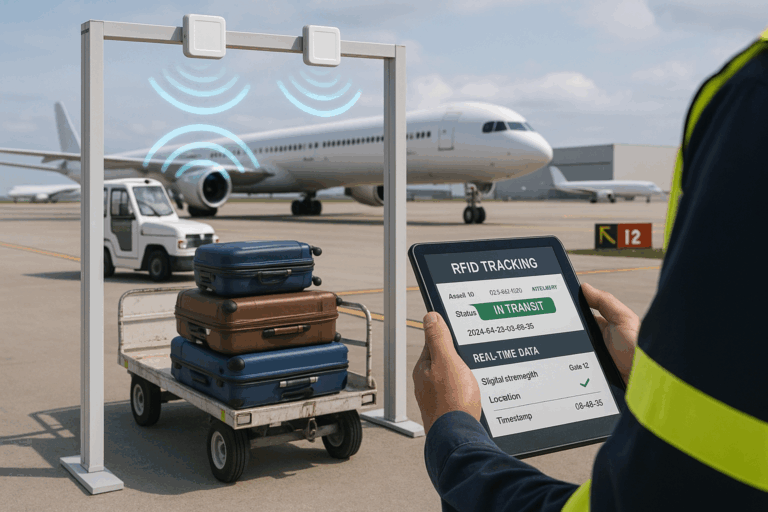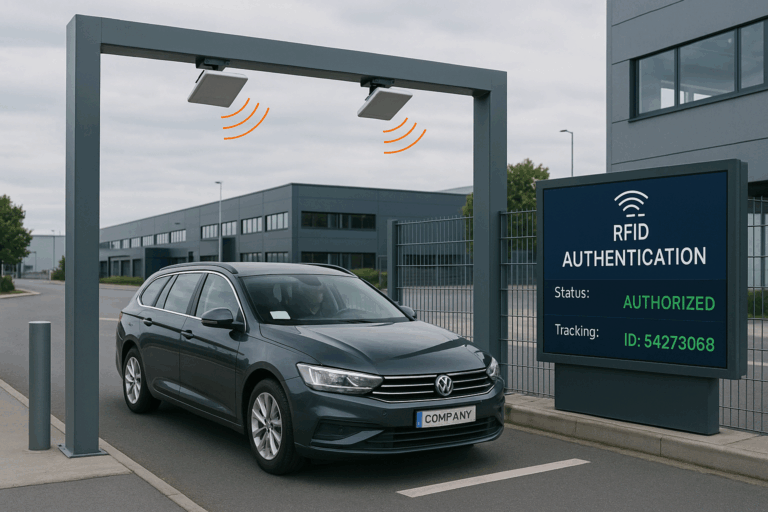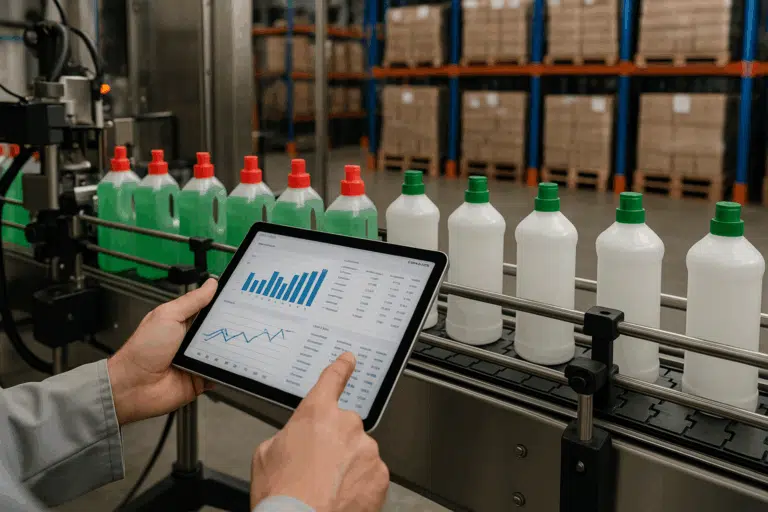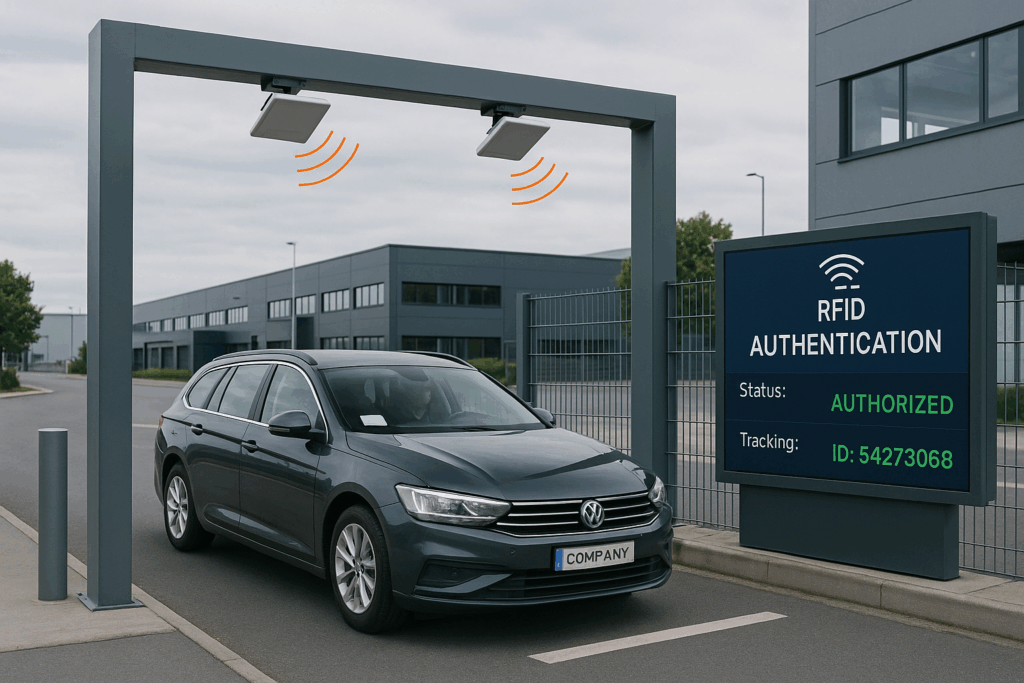RFID (Radio Frequency Identification) technology has emerged as a powerful tool with a wide range of applications across industries. Its ability to wirelessly track and identify objects using radio waves has revolutionized asset management, inventory control, and supply chain operations.
In this comprehensive guide, we will explore the fundamentals of RFID, including its components, working principles, and various types of tags and readers.
We will delve into the benefits and challenges associated with RFID implementation, as well as its applications in different sectors such as retail, logistics, healthcare, and manufacturing. Moreover, we will discuss key considerations for successful RFID deployment, including integration with existing systems, data security, and scalability.
Whether you are new to RFID technology or seeking a deeper understanding of its capabilities, this guide will provide you with valuable insights to navigate the world of RFID and harness its potential for improved operational efficiency and business success.
Table of Contents
ToggleUnderstanding RFID
What is RFID?
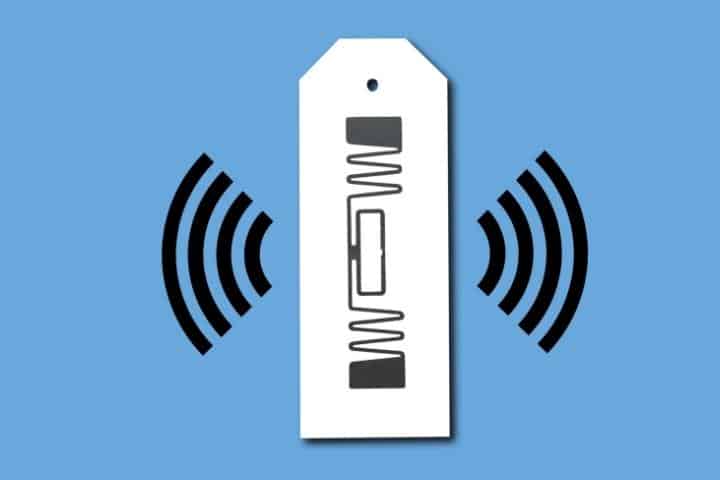
RFID (Radio Frequency Identification) is a technology that uses radio waves to wirelessly identify and track objects. It consists of three key components: RFID tags, RFID readers, and a backend database or system.
RFID tags, also known as transponders, are small electronic devices that contain a unique identifier and can be attached to or embedded within objects. RFID readers emit radio waves and receive signals from the RFID tags within their range.
When an RFID tag comes within range of a reader, it transmits its unique identifier, which is captured by the reader and sent to the backend system for processing. RFID technology offers numerous benefits, including real-time asset tracking, inventory management, improved supply chain visibility, and increased operational efficiency across industries such as retail, logistics, healthcare, and manufacturing.
How Does RFID Work?

RFID (Radio Frequency Identification) technology works by using radio waves to wirelessly identify and track objects. It involves three main components: RFID tags, RFID readers, and a backend system.
RFID tags, consisting of a microchip and an antenna, are attached to or embedded within objects. The microchip contains unique identification information. When an RFID reader emits radio waves, it creates an electromagnetic field.
When an RFID tag enters this field, it absorbs some energy and uses it to power the microchip. The powered tag then transmits its unique identifier back to the reader using radio waves.
The reader captures the transmitted data and sends it to the backend system for further processing and action.
The backend system can store and manage the collected data, enabling real-time tracking, inventory management, and other applications. RFID technology offers advantages such as automation, increased efficiency, and improved visibility in various industries.
Types of RFID Tags
RFID (Radio Frequency Identification) tags come in various types, each suited for specific applications and environments. Passive RFID tags are the most common type and do not have an internal power source.
They rely on the energy received from the RFID reader’s radio waves to power the tag’s chip and transmit data. Active RFID tags, on the other hand, have an onboard battery that powers the tag and enables longer read ranges.
These tags are ideal for applications requiring extended read distances or frequent updates of tag information. Semi-passive RFID tags have a battery for powering the chip but still rely on the reader’s energy to transmit data.
They offer a balance between passive and active tags. Additionally, RFID tags can be categorized based on their form factor, such as labels, cards, key fobs, or specialized tags designed for specific environments like metal-mount tags or high-temperature-resistant tags. The selection of the appropriate RFID tag depends on factors such as read range requirements, environmental conditions, durability, and the specific application’s needs.
RFID vs. Other Technologies
RFID vs. Barcodes: A Comparative Analysis
RFID (Radio Frequency Identification) and barcodes are both widely used for identification and tracking purposes, but they differ in terms of technology and capabilities. RFID offers several advantages over barcodes.
Firstly, RFID tags can be read wirelessly and without line-of-sight, whereas barcodes require direct visibility for scanning. This makes RFID more suitable for automated and high-volume scanning processes.
Additionally, RFID tags can store and transmit more data than barcodes, allowing for more detailed information about an item.
RFID tags also offer the potential for real-time tracking and monitoring, enabling better inventory control and supply chain visibility. However, RFID technology is generally more expensive than barcodes and requires specialized infrastructure and readers.
Barcodes, on the other hand, are less costly and widely supported, making them easier to implement and use in certain applications. Ultimately, the choice between RFID and barcodes depends on factors such as the specific use case, required functionalities, budget, and infrastructure considerations.
RFID and IoT: A Powerful Combination
RFID (Radio Frequency Identification) and IoT (Internet of Things) together form a powerful combination that revolutionizes the way objects are identified, tracked, and managed.
RFID enables wireless identification and data capture, while IoT connects these RFID-tagged objects to the internet, facilitating seamless data exchange and communication.
By integrating RFID with IoT, businesses gain real-time visibility into their assets, inventory, and operations. RFID-enabled objects become smart, transmitting valuable data such as location, temperature, and status to IoT platforms for analysis and decision-making.
This combination enhances supply chain visibility, improves asset tracking and management, optimizes inventory control, and enables predictive maintenance.
With RFID and IoT working in harmony, businesses can achieve greater operational efficiency, enhanced customer experiences, and data-driven insights, leading to improved productivity and better business outcomes.
Applications and Future of RFID

RFID (Radio Frequency Identification) technology has a wide range of applications across various industries, and its potential for future advancements is vast.
Currently, RFID is used in supply chain management for inventory control, asset tracking, and logistics optimization.
It is also employed in retail for inventory management and theft prevention. In healthcare, RFID helps with patient tracking, medication management, and equipment monitoring.
The future of RFID holds promising possibilities, including its integration with emerging technologies like IoT and AI for enhanced automation, real-time data analysis, and predictive maintenance.
RFID’s potential expansion into areas such as smart cities, smart agriculture, and wearable technology opens up new opportunities for connectivity, efficiency, and improved experiences.
As the technology continues to evolve, we can expect RFID to play an increasingly significant role in shaping the way we manage and interact with objects, leading to smarter and more interconnected environments.
RFID in Supply Chain Management
RFID (Radio Frequency Identification) technology has revolutionized supply chain management by providing real-time visibility, automation, and efficiency.
With RFID tags attached to products, assets, and containers, supply chain stakeholders can track and monitor their movement throughout the entire supply chain, from manufacturing to distribution to retail.
RFID enables accurate and automated inventory management, reducing stockouts and improving demand forecasting. It enhances the accuracy and speed of order fulfillment, leading to improved customer satisfaction.
RFID also enables better asset tracking, minimizing loss or theft of valuable resources. Additionally, it facilitates supply chain traceability, ensuring compliance with regulations and enabling efficient recalls when necessary.
Overall, RFID in supply chain management optimizes operations, reduces costs, and enhances transparency, making it an indispensable tool in today’s complex and dynamic supply chain environments.
RFID in Retail
RFID (Radio Frequency Identification) technology has significantly transformed the retail industry, enabling enhanced inventory management, improved customer experiences, and streamlined operations.
With RFID tags attached to products, retailers can automate and expedite inventory counts, reducing the time and effort required for stocktaking. Real-time stock visibility allows for accurate replenishment and minimizes out-of-stock situations, ensuring products are readily available for customers.
RFID also enables efficient omnichannel operations, as items can be accurately located and shipped from various locations. Furthermore, RFID-based theft prevention systems help retailers combat shrinkage and improve security.
Additionally, RFID enables better product authentication and tracking, enhancing supply chain traceability and enabling faster recalls when needed.
Overall, RFID in retail drives operational efficiency, enhances inventory accuracy, improves the shopping experience, and ultimately leads to increased sales and customer satisfaction.
RFID in Healthcare
RFID (Radio Frequency Identification) technology has made significant contributions to the healthcare industry, transforming processes and improving patient care.
RFID tags attached to medical equipment, supplies, and patient wristbands enable real-time tracking and monitoring, enhancing asset management and reducing the risk of loss or theft. RFID-enabled medication management systems improve accuracy and efficiency by automating medication verification and administration.
Patient tracking using RFID ensures accurate identification and improves workflow efficiency in hospitals and clinics. Additionally, RFID-enabled temperature monitoring enhances the safety and quality of perishable medical supplies and medications.
RFID in healthcare streamlines operations, reduces errors, enhances patient safety, and improves overall efficiency, ultimately leading to better patient outcomes and experiences.
RFID in Transportation
RFID (Radio Frequency Identification) technology plays a crucial role in the transportation industry, revolutionizing processes related to logistics, tracking, and supply chain management.
RFID tags attached to containers, pallets, and individual items enable real-time tracking and monitoring throughout the transportation network, providing accurate visibility and traceability.
This improves inventory management, reduces shipment errors, and enhances overall logistics efficiency. RFID-enabled automated toll collection systems streamline traffic flow and enhance the customer experience on highways and bridges.
Additionally, RFID technology in vehicle tracking systems allows for efficient fleet management, optimizing routes, and improving delivery schedules.
RFID also plays a vital role in securing and tracking high-value cargo, reducing theft and enhancing supply chain security. Overall, RFID in transportation brings increased visibility, efficiency, and security, leading to improved operational performance and customer satisfaction.
RFID in Agriculture
RFID (Radio Frequency Identification) technology has found valuable applications in the agricultural industry, revolutionizing various aspects of farming and livestock management. By attaching RFID tags to livestock, farmers can track and monitor individual animals, enabling efficient herd management, health monitoring, and improved breeding programs.
RFID can also be used to monitor environmental conditions, such as temperature and humidity, ensuring optimal growing conditions for crops. Additionally, RFID technology enables precise inventory management of agricultural inputs, such as seeds, fertilizers, and pesticides, improving efficiency and reducing waste.
RFID in agriculture facilitates automated data collection, enhancing traceability, compliance with regulations, and product authentication. Overall, RFID empowers farmers with accurate data, enabling them to make informed decisions, optimize resource allocation, improve productivity, and ensure sustainable agricultural practices.
RFID in Manufacturing
RFID (Radio Frequency Identification) technology has had a profound impact on the manufacturing industry, revolutionizing processes and enhancing efficiency. By utilizing RFID tags, manufacturers can track and monitor the movement of raw materials, components, and finished goods throughout the production cycle.
This enables real-time inventory management, accurate asset tracking, and streamlined supply chain operations. RFID improves quality control by providing real-time data on product status and facilitating traceability, allowing for prompt identification of any defects or issues.
Furthermore, RFID enhances production efficiency by automating data collection, reducing manual errors, and enabling seamless integration with other manufacturing systems.
The technology also aids in asset maintenance and management, optimizing equipment utilization and minimizing downtime. Overall, RFID in manufacturing leads to improved productivity, enhanced product quality, streamlined operations, and increased visibility throughout the production process.
The Future of RFID: Trends and Predictions
The future of RFID (Radio Frequency Identification) technology holds exciting prospects and transformative possibilities.
One key trend is the integration of RFID with emerging technologies such as IoT (Internet of Things) and AI (Artificial Intelligence).
This combination will enable more advanced applications, including real-time data analytics, predictive maintenance, and automated decision-making. The miniaturization of RFID tags and the development of flexible and printable tags will expand their usability in various industries and applications.
Additionally, the adoption of cloud-based RFID solutions will enable seamless data sharing, scalability, and collaboration across multiple platforms. The use of blockchain technology with RFID holds promise for enhancing supply chain transparency and security.
Furthermore, advancements in battery-free and energy-harvesting RFID technologies will lead to even greater deployment possibilities. The future of RFID is poised to bring enhanced connectivity, efficiency, and intelligence, empowering organizations to unlock new levels of operational excellence and customer satisfaction.
Ethical and Privacy Implications of RFID
The widespread adoption of RFID (Radio Frequency Identification) technology raises ethical and privacy concerns that require careful consideration.
One ethical concern is the potential for unauthorized tracking and surveillance, as RFID tags can be embedded in everyday objects without individuals’ knowledge or consent.
This raises questions about privacy rights and the protection of personal information. Additionally, the collection and storage of large amounts of data through RFID systems may give rise to security risks and the potential for misuse or hacking.
Striking a balance between the benefits of RFID technology and individuals’ rights to privacy and data protection is crucial. It is imperative for organizations and policymakers to establish robust security measures, transparent data practices, and clear consent mechanisms to ensure that RFID technology is ethically and responsibly implemented, safeguarding privacy rights and maintaining public trust.
Conclusion
In conclusion, understanding RFID (Radio Frequency Identification) involves recognizing its potential and impact across various domains. When compared to other technologies like barcodes, RFID offers advantages such as wireless and automated data capture, real-time tracking, and increased data storage capacity.
RFID finds applications in diverse sectors including supply chain management, retail, healthcare, transportation, and manufacturing, where it enhances operational efficiency, improves inventory control, and enables better asset management.
The future of RFID holds promising trends such as integration with IoT and AI, miniaturization of tags, cloud-based solutions, and advancements in battery-free technology. However, it is crucial to address the ethical and privacy implications associated with RFID, ensuring data protection, security, and informed consent.
By carefully navigating these considerations, organizations and policymakers can harness the full potential of RFID technology while upholding ethical standards, protecting privacy rights, and maintaining public trust.
Frequently Asked Questions (FAQs)
What are some emerging trends in RFID technology?
Several emerging trends are shaping the future of RFID (Radio Frequency Identification) technology. One significant trend is the integration of RFID with other advanced technologies, such as IoT (Internet of Things) and AI (Artificial Intelligence).
This integration allows for seamless connectivity, real-time data exchange, and intelligent decision-making. Another trend is the development of flexible and printable RFID tags, enabling their application on a wide range of surfaces and objects.
Furthermore, the adoption of cloud-based solutions for RFID data management is gaining traction, providing scalability, data sharing, and collaboration across platforms. Additionally, advancements in battery-free and energy-harvesting RFID technologies are enhancing the efficiency and sustainability of RFID deployments.
These emerging trends in RFID technology are poised to bring advancements in automation, data analytics, connectivity, and sustainability, driving the growth and expanding the possibilities of RFID in various industries.
How does RFID technology impact consumer privacy?
RFID (Radio Frequency Identification) technology does raise concerns about consumer privacy due to its ability to track and identify objects, including personal belongings. RFID tags can be embedded in products, cards, or even embedded within clothing, enabling the collection and transmission of data without individuals’ knowledge or consent.
This raises potential risks for unauthorized tracking and surveillance. However, the impact on consumer privacy depends on how RFID technology is implemented and managed. Safeguarding consumer privacy requires the adoption of strong security measures, encryption techniques, and privacy-by-design principles.
Transparent data practices, clear consent mechanisms, and adherence to privacy regulations are crucial to ensure that individuals have control over their personal information and that data is used ethically and responsibly. Striking the right balance between the benefits of RFID technology and protecting consumer privacy is essential to maintaining public trust and confidence in its usage.
Can RFID tags be hacked or cloned?
While no technology is entirely immune to hacking, RFID (Radio Frequency Identification) tags are relatively secure due to the use of encryption and other security measures.
The security of RFID systems relies on the implementation of robust protocols and cryptographic algorithms to protect the integrity and confidentiality of data transmitted between the RFID tags and readers.
However, it is important to note that vulnerabilities can still exist, especially if security measures are not implemented correctly or if older RFID systems with weaker security mechanisms are used. With proper security measures in place, such as unique identifiers, authentication protocols, and secure communication channels, the risk of RFID tags being hacked or cloned can be significantly mitigated.
Continuous efforts to improve RFID security and stay updated with the latest technologies and best practices are crucial in ensuring the integrity and trustworthiness of RFID systems.
What industries can benefit the most from RFID technology?
RFID (Radio Frequency Identification) technology offers benefits to a wide range of industries, but certain sectors stand to gain the most from its implementation. Retail is one industry that can greatly benefit from RFID, as it enables real-time inventory management, reduces out-of-stock situations, and enhances the overall customer shopping experience.
The logistics and supply chain industry can also leverage RFID for improved asset tracking, efficient warehouse management, and streamlined inventory control. Healthcare can benefit from RFID for patient tracking, medication management, and equipment monitoring, leading to enhanced patient safety and operational efficiency.
Manufacturing industries can optimize production processes, asset management, and quality control through RFID implementation. Additionally, transportation and automotive sectors can utilize RFID for improved fleet management, shipment tracking, and automated toll collection.
Overall, RFID technology brings substantial advantages to industries by enhancing operational efficiency, optimizing resource allocation, and improving overall customer satisfaction.
How does RFID technology interact with other technologies like IoT?
RFID (Radio Frequency Identification) technology seamlessly interacts with other technologies like IoT (Internet of Things), amplifying its capabilities and expanding its potential applications.
By integrating RFID with IoT, objects equipped with RFID tags can become interconnected within a larger network of devices and systems.
RFID-enabled objects can capture and transmit real-time data, such as location, temperature, or status, to IoT platforms, where the data can be analyzed and utilized for intelligent decision-making.
The integration of RFID and IoT enables enhanced supply chain visibility, optimized asset management, and efficient inventory control. It also enables automation and process optimization, as data from RFID tags can trigger actions in IoT systems, such as automated replenishment or maintenance requests.
Overall, the combination of RFID and IoT amplifies the benefits of both technologies, enabling seamless connectivity, real-time insights, and improved operational efficiency across a wide range of industries and applications.



